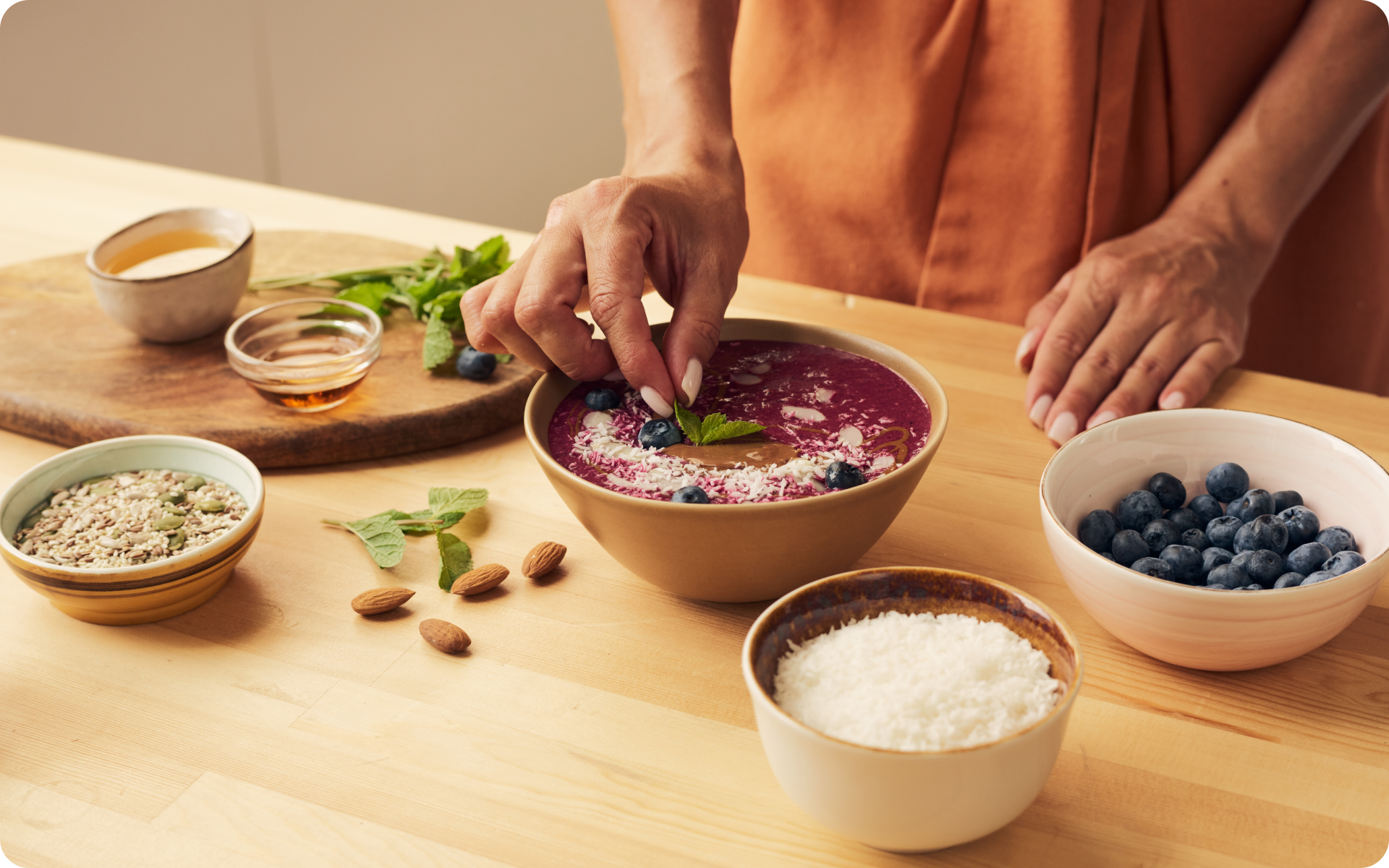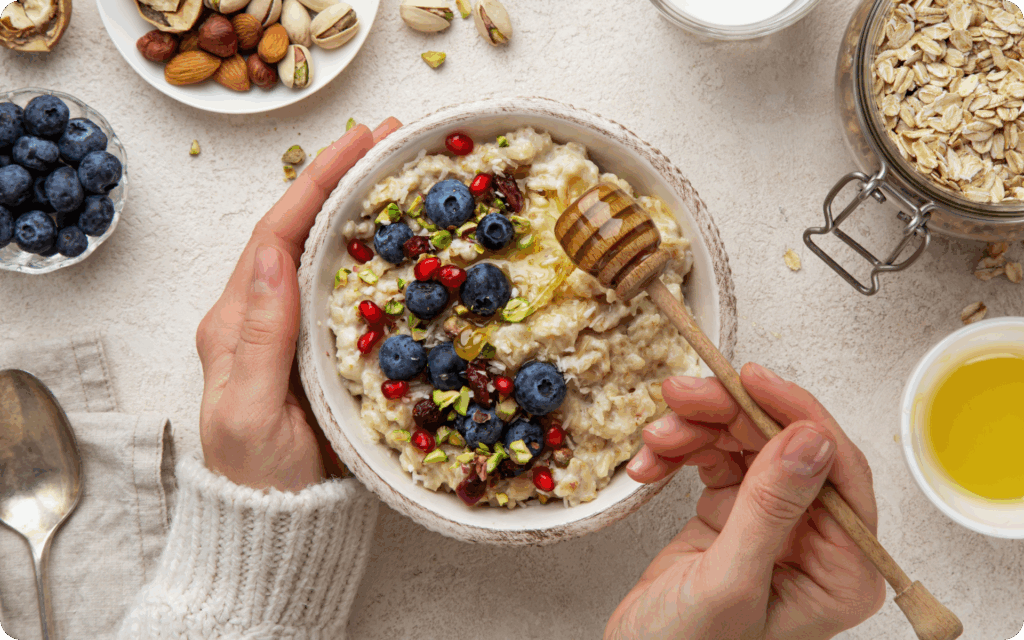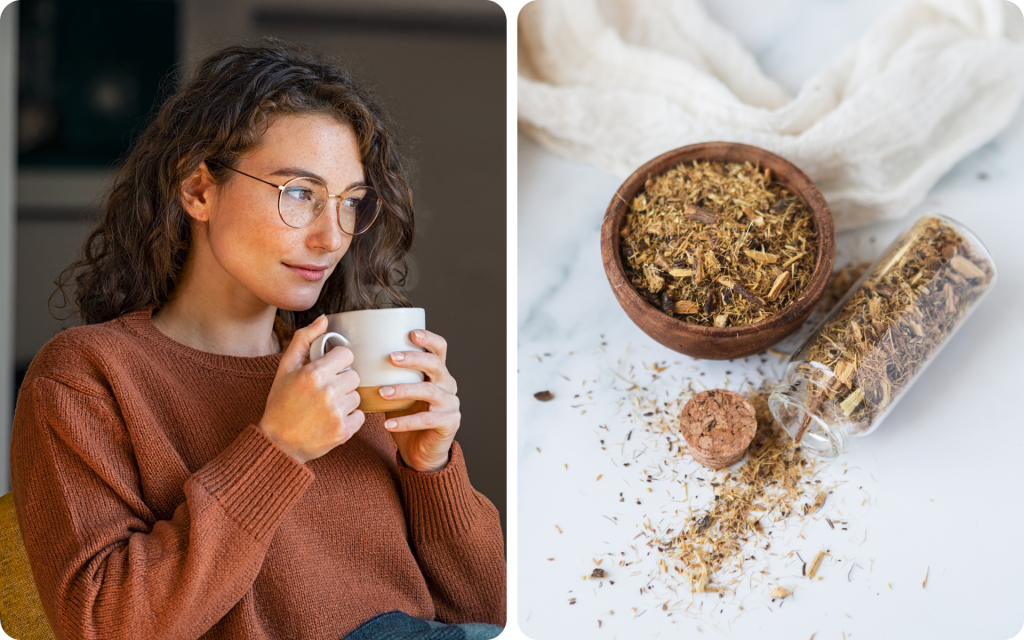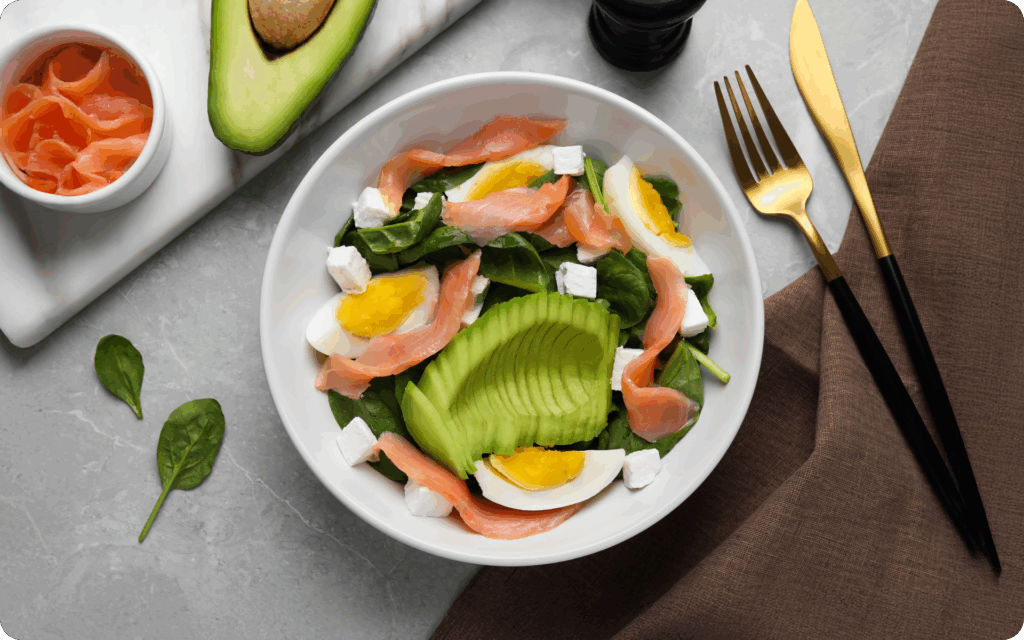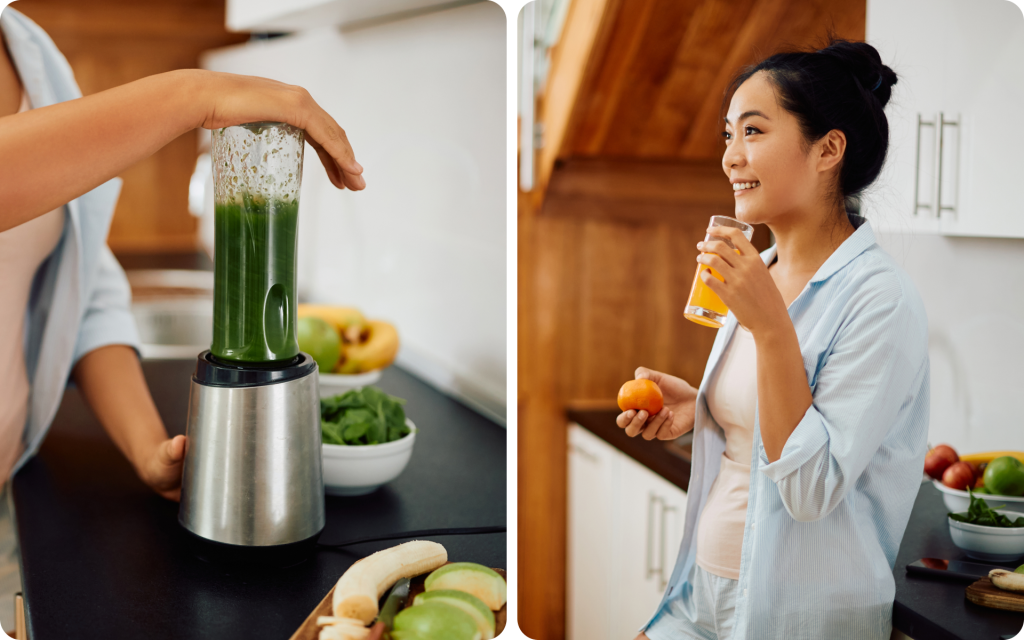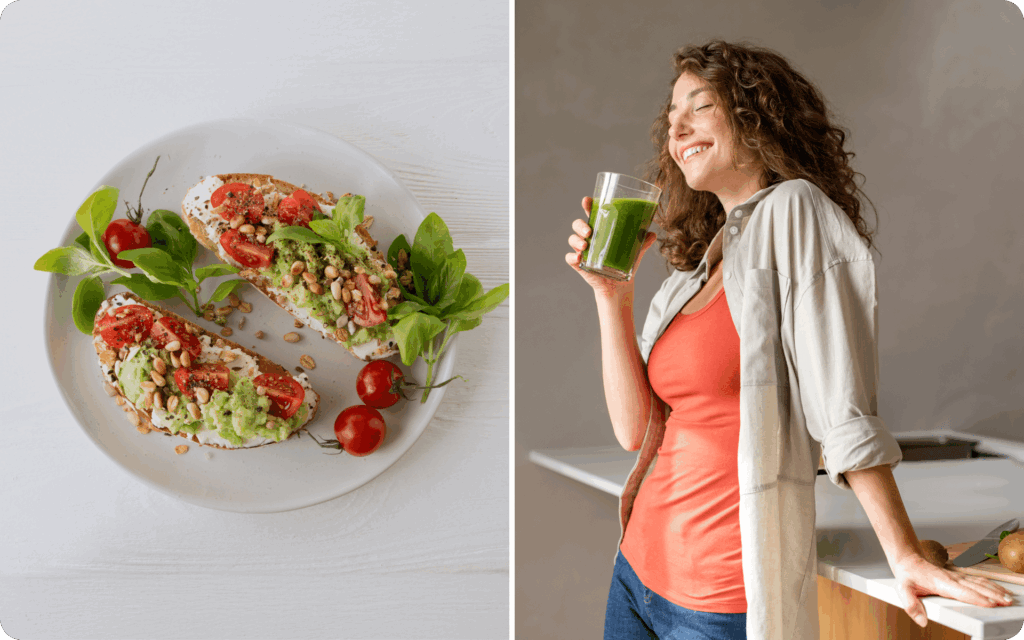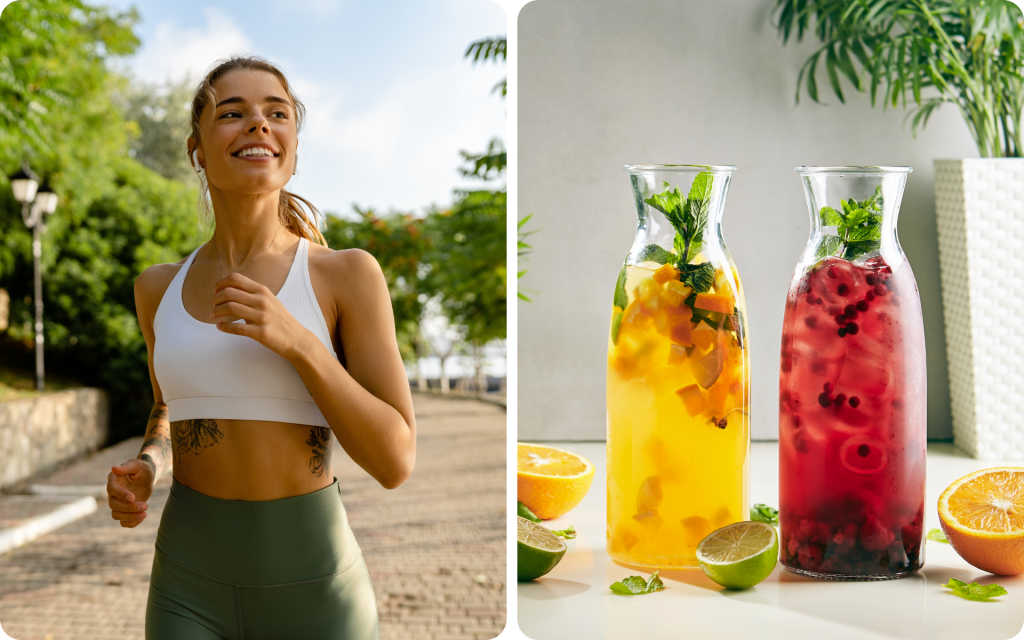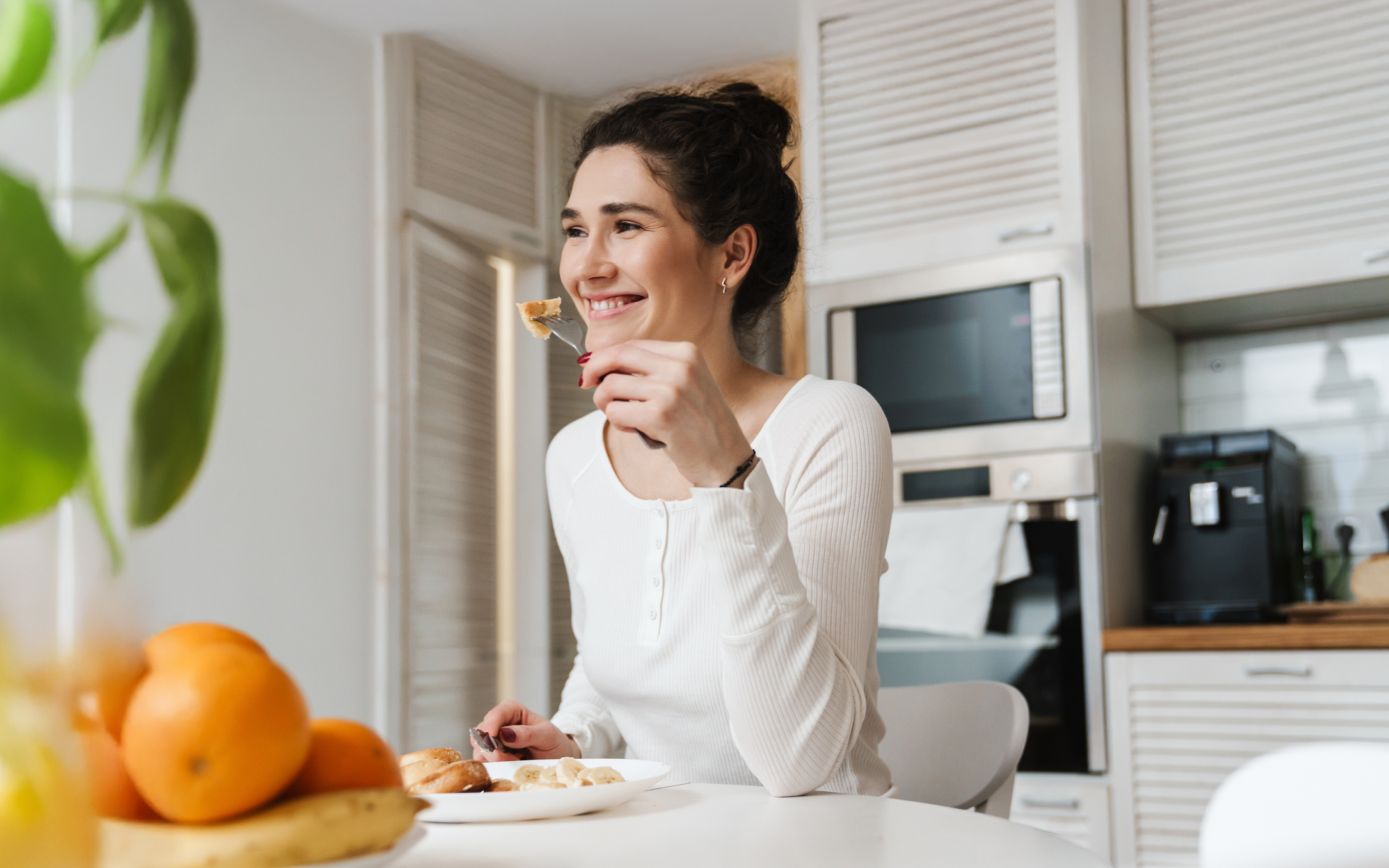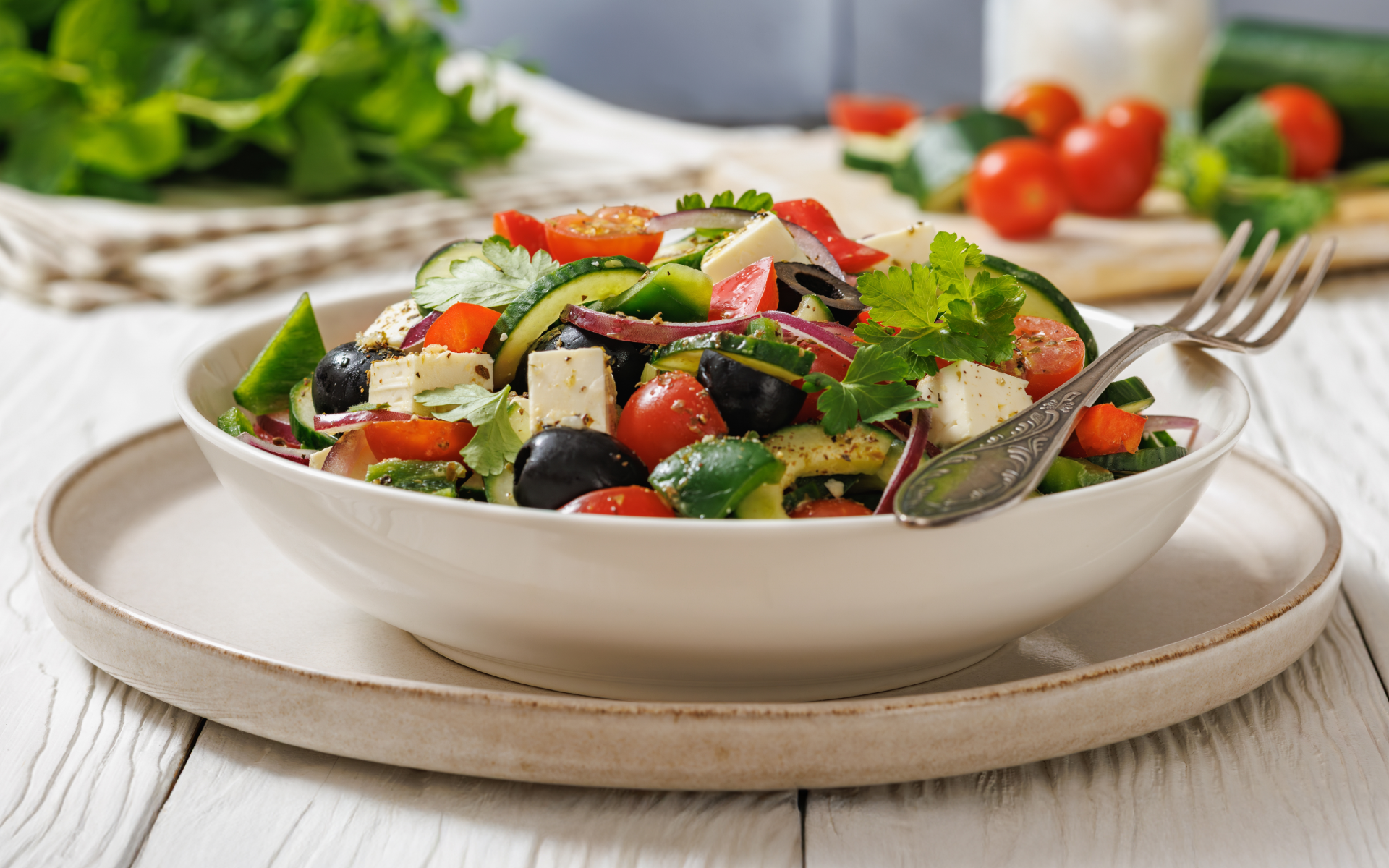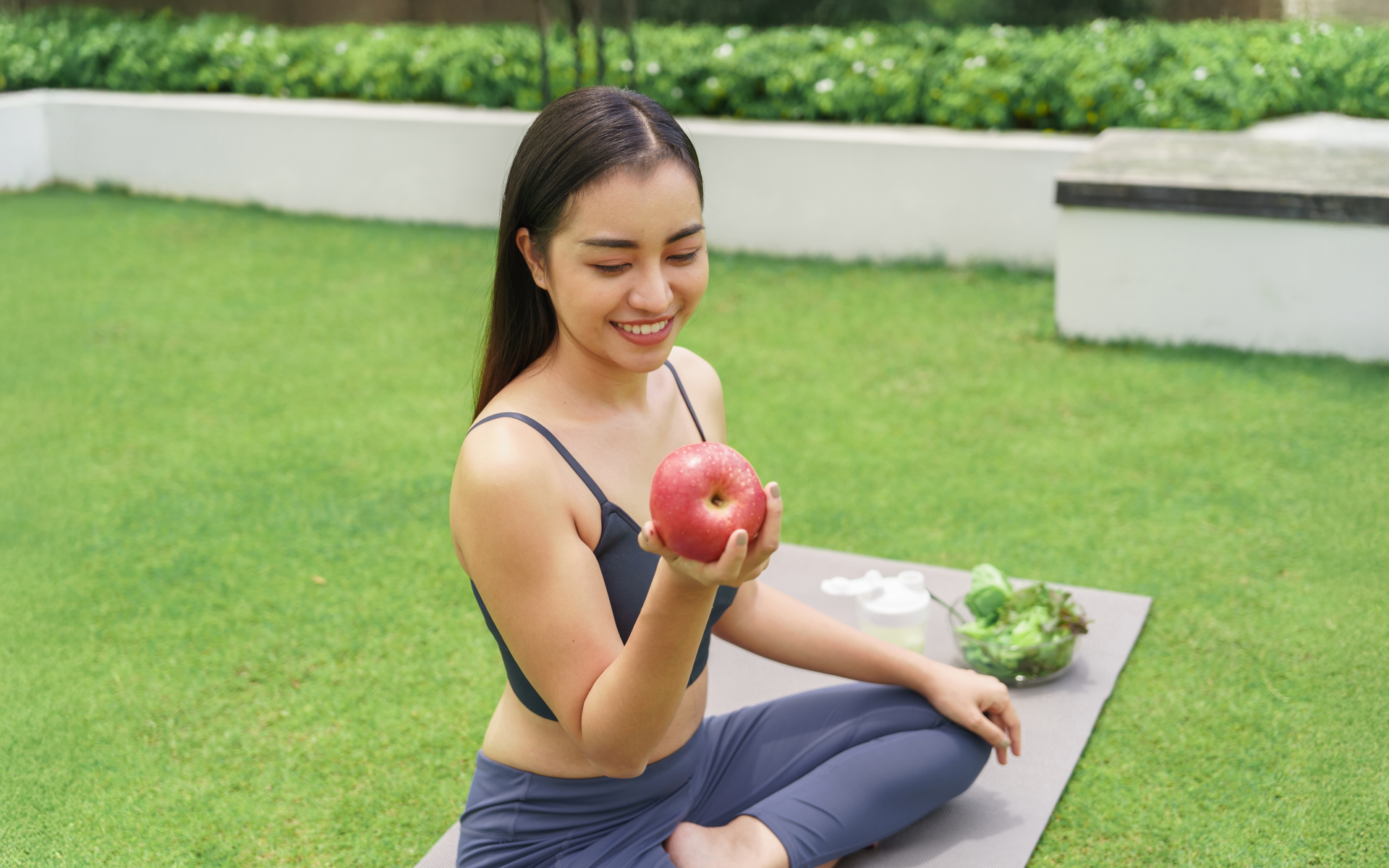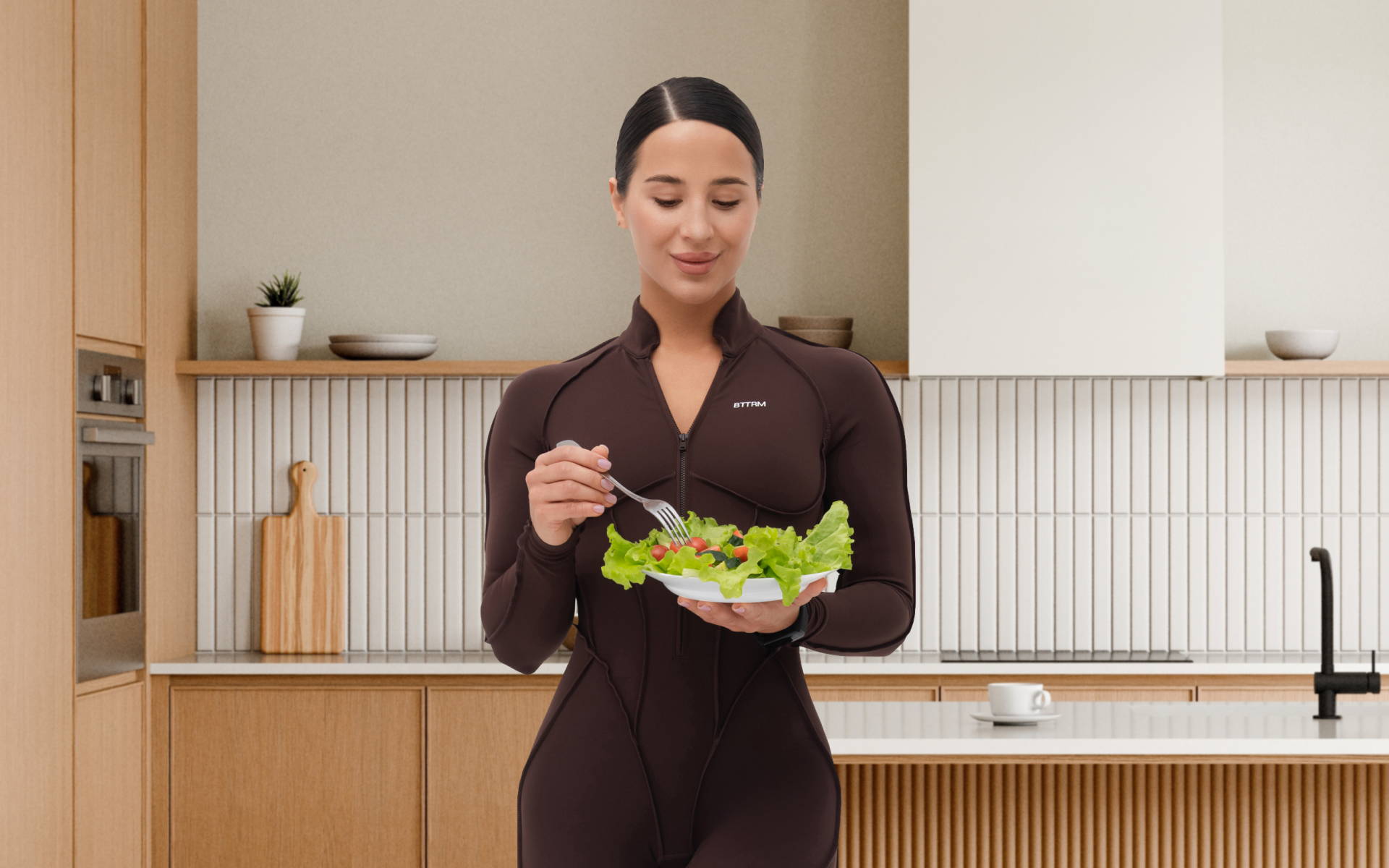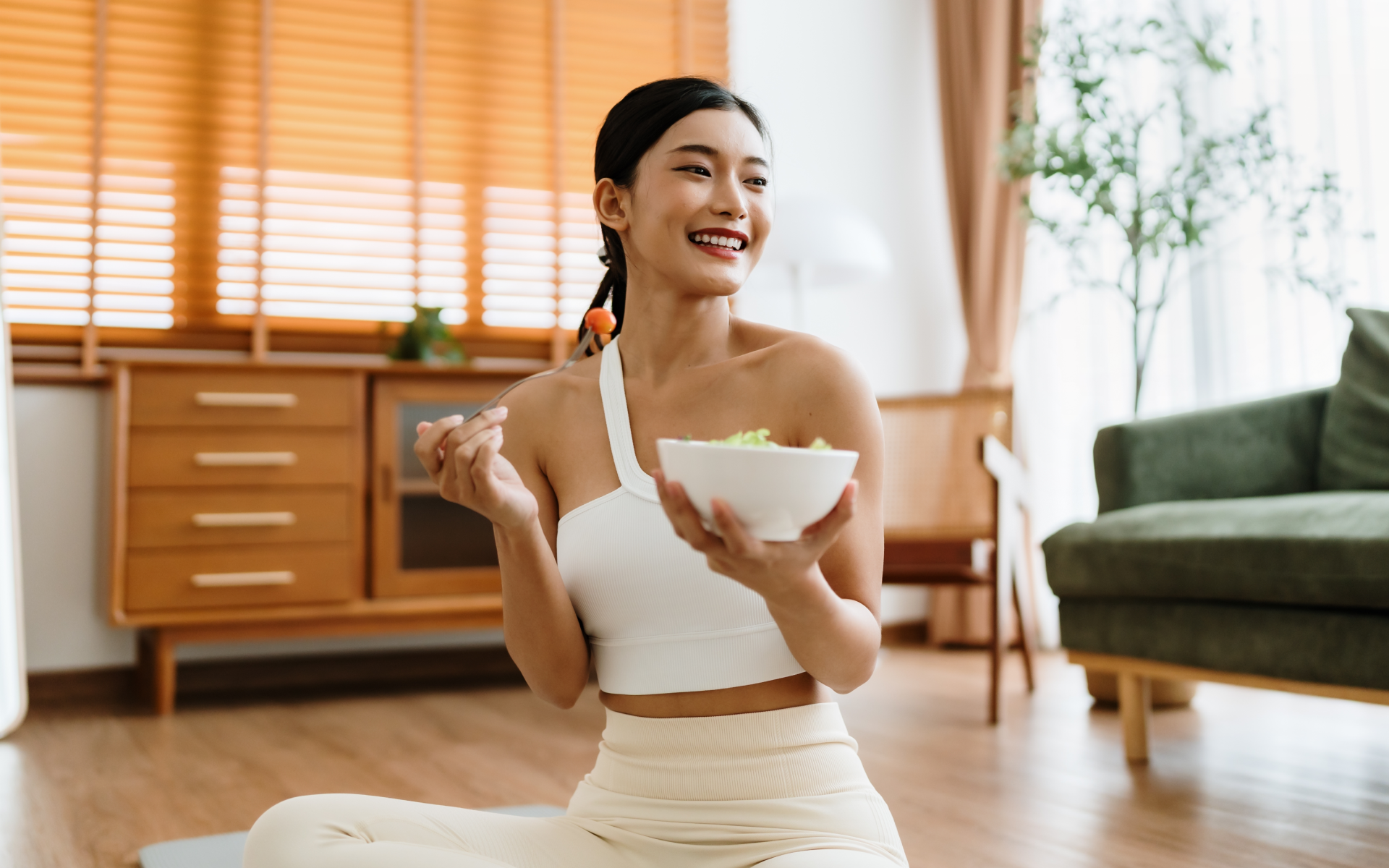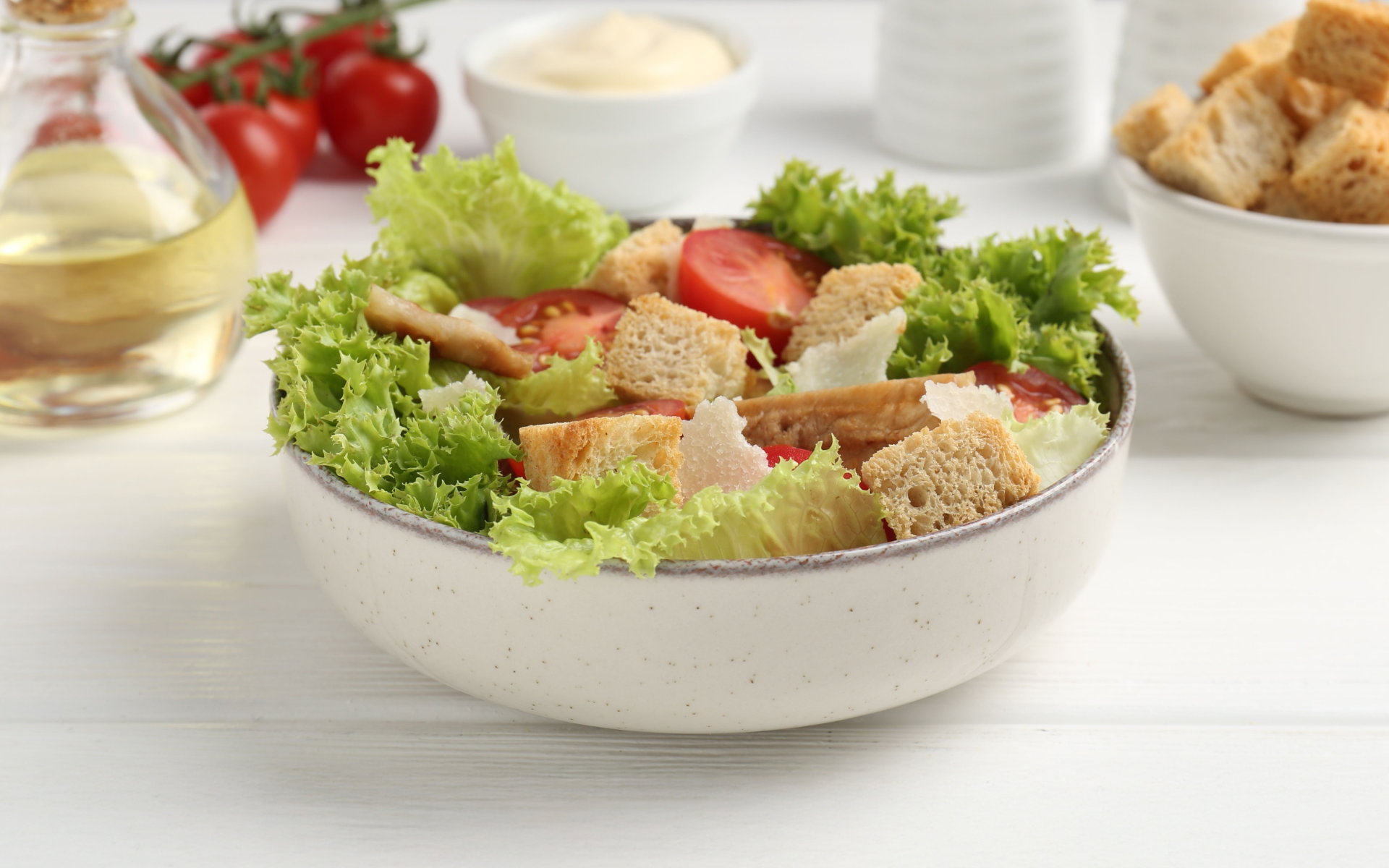A no-sugar meal plan aims to eliminate or minimize added sugars in your diet, thereby improving your overall health and well-being.
People adopt no-sugar diets for various reasons. Some to lose or manage their weight, some to reduce the risk of chronic diseases associated with added sugar, and some to reduce the risk of type 2 diabetes, among other reasons.
For most people, a no-sugar meal plan is a straightforward way to cut calories and lose weight. It is indeed a fact that sugar is high in calories.
100g of table sugar contains about 387 calories (3). Therefore, avoiding added sugar in the diet means reducing the number of calories that you would otherwise consume.
It’s imperative to understand that consuming too much added sugar can pose a significant threat to your health, as it may contribute to heart disease and other long-term health issues (4). Therefore, a no-sugar diet or even just reducing added sugar may help prevent some of those chronic health issues.
What Is An Easy 2-Week No-Sugar Meal Plan To Stick To?
Here is a simple 2-week no-sugar meal plan that you can easily follow.
The goal here is to avoid added sugar and follow a nutritious and realistic no-sugar diet plan. While the meal doesn’t contain added sugars, it will still provide you with the energy you need, reduce your sugar cravings, and help improve your overall health.
Week 1
Day 1
- Breakfast: Sautéed spinach, scrambled eggs, and avocado with whole wheat toast.
- Lunch: Grilled chicken with steamed vegetables in a whole-grain wrap.
- Dinner: Brown rice, steamed broccoli, and baked salmon.
- Snack: Almonds.
Day 2
- Breakfast: Unsweetened almond milk with chia seeds and berries.
- Lunch: Lentil soup and side salad.
- Dinner: Quinoa with mixed vegetables and stir-fried tofu.
- Snack: Hummus with carrot sticks.
Day 3
- Breakfast: Plain Greek yogurt with nuts and cinnamon.
- Lunch: Boiled egg with tuna lettuce wraps.
- Dinner: Roasted zucchini with sweet potatoes and grilled beef strips.
- Snack: Guacamole with sliced cucumber.
Day 4
- Breakfast: Avocado (whole grain) toast with boiled egg and unsweetened tea.
- Lunch: Black beans with quinoa salad and corn.
- Dinner: Cauliflower rice with sugar-free chicken curry.
- Snack: A handful of walnuts.
Reasons why BetterMe is a safe bet: a wide range of calorie-blasting workouts, finger-licking recipes, 24/7 support, challenges that’ll keep you on your best game, and that just scratches the surface! Start using our app and watch the magic happen.
Day 5
- Breakfast: Smoothie made from spinach, lemon, avocado, cucumber, protein powder, and water.
- Lunch: Sautéed vegetables with turkey whole grain wraps.
- Dinner: Green beans, mashed sweet potatoes, and grilled tilapia.
- Snack: Hard-boiled egg.
Day 6
- Breakfast: Unsweetened coconut milk with nuts and chia pudding.
- Lunch: Baked salmon with cucumber and tomato salad and farro.
- Dinner: Grilled beef with steamed vegetables and brown rice-stuffed bell peppers.
- Snack: Apple slices.
Day 7
- Breakfast: Omelet with onions, mushrooms, and peppers, and whole wheat toast.
- Lunch: Grilled shrimp with zucchini and whole wheat or legume-based pasta.
- Dinner: Cabbage slaw with roasted chicken thighs and baked potato.
- Snack: Plain popcorn.
Week 2
Day 1
- Breakfast: Oatmeal with blueberries, nut butter, and flaxseeds.
- Lunch: Egg salad on whole grain bread.
- Dinner: Steamed green beans, brown rice, and baked cod.
- Snack: Hummus and bell pepper slices.
Day 2
- Breakfast: Cottage cheese with cinnamon and walnuts.
- Lunch: Roasted pumpkin with grilled chicken breast.
- Dinner: Buckwheat noodles with tempeh and veggie stir-fry.
- Snack: Roasted sunflower seeds.
Day 3
- Breakfast: Protein smoothie with kale, ginger, cucumber, and lemon.
- Lunch: Spinach and lentil stew.
- Dinner: Sautéed greens with turkey burger and avocado on a whole wheat bun.
- Snack: Hard-boiled egg.
Day 4
- Breakfast: Tomato slices with whole-grain toast and a boiled egg.
- Lunch: Quinoa bowl with roasted veggies and chickpeas.
- Dinner: Steamed carrots and peas with baked mackerel.
- Snack: Carrot sticks.
Day 5
- Breakfast: Chia and sunflower seeds with unsweetened Greek yogurt.
- Lunch: Veggie skewers with grilled chicken and bulgur wheat.
- Dinner: Beef and broccoli stir-fry over brown rice.
- Snack: Roasted chickpeas.
Day 6
- Breakfast: Almond milk pudding with berries.
- Lunch: Sugar-free, whole grain crackers with tuna salad.
- Dinner: Beef stew with steamed vegetables and roast potatoes.
- Snack: Celery sticks with cucumber slices.
Day 7
- Breakfast: Spinach omelet with mushrooms and whole-grain toast.
- Lunch: Grilled salmon with quinoa and mixed vegetables.
- Dinner: Grilled chicken thighs with roasted vegetables and mashed sweet potatoes.
- Snack: A handful of mixed nuts and seeds.
Read more: Healthy Meal Plan For Picky Eaters: Making Healthy Eating Accessible
Can You Lose Weight Eating No Sugar?
Yes, when combined with a healthy diet and exercise, reducing or eliminating added sugar can contribute to weight loss.
As we have mentioned, sugar contains a high number of calories, and to reduce weight, you need to cut down on the number of calories that you eat.
Therefore, reducing sugar intake can lead to a significant reduction in your calorie consumption, which can impact your weight. It is also essential and beneficial to consume a healthy, balanced diet, maintain a calorie deficit, and engage in regular exercise.
What Foods Should You Avoid On No Sugar Diet?
In a sugar-free diet, there are several foods that you should avoid.
These are foods that contain added sugars or have a high sugar content.
These foods to avoid include the following:
- Sugary Drinks
Most sugary drinks contain a lot of added sugar. Additionally, these drinks are not only high in calories but also offer little nutritional value.
Examples include sodas, canned fruit juices, energy drinks, and sugary shakes.
- Ultra-Processed and Packaged Foods
Ultra-processed and packaged foods may contain added sugars that many may refer to as “bad sugar”. These include flavored chips, sauces, and salad dressings.
Before consuming the product, check if it contains any of the following ingredients:
- Sucrose
- Glucose
- Artificial sweeteners
- High-fructose corn syrup
Look for added sugars on the nutrition facts label to identify if a food is ultra-processed.
- Refined Carbs
Refined grain products are not the same as added sugars, but many people on a no-sugar diet also choose to limit them, especially when practicing a no-carb no-sugar diet meal plan.
Refined-carb foods to avoid include white rice, white bread, refined pasta, and flour-based baked goods, among other refined carbohydrates.
Substituting these with whole-grain products, starchy vegetables, and legumes is a more nutritious and filling option.
- Alcoholic Beverages
Many alcoholic drinks contain high sugar content. Therefore, if you are on a sugar-free diet, you need to avoid consuming alcohol as well.
Avoid sweet wine, flavored liquors, beer, and alcoholic cocktails and mixed drinks.
- Healthy With Hidden Sugar
Many healthy foods contain hidden sugar that you must avoid on a no–sugar diet.
Healthy sugary foods include protein bars, instant oatmeal, fruit-flavored yogurt, smoothies, and many store-bought foods. Read the nutrition facts and ingredient labels to make informed choices.
What Do You Eat On A No Sugar Diet?
There is a wide variety of foods you can eat while following a no-sugar diet.
While maintaining a sugar-free diet, it is also important to keep your meals balanced and nutrient-dense. A no-sugar diet food list includes the following options:
- Protein: Chicken, turkey, beef, pork, lamb, salmon, tuna, tilapia, eggs, unsweetened tofu, beans, chickpeas, and lentils.
- Vegetables: Any vegetables such as spinach, zucchini, cucumbers, cabbage, lettuce, onions, mushrooms, bell peppers, and Brussels sprouts.
- Healthy Fats: Avocados, olive oil, other vegetable oils, and nuts and seeds like almonds, walnuts, flaxseeds, and chia seeds.
- Dairy: Plain yogurt, cheese (like cheddar and mozzarella), milk, etc.
- Fruits: All fruits such as green apples, berries, avocados, and kiwi. These contain natural sugar but not added sugar, and therefore do not need to be avoided on a no-added-sugar diet.
- Drinks: Water, black coffee, and herbal tea. Unsweetened flavored waters and sparkling water are also okay.
- Low Sugar Starchy Foods: Starchy vegetables like potatoes, legumes like beans, peas, and lentils, whole grains like oats, quinoa, brown rice, and whole grain bread with no sugar.
- Spices, Herbs, & Condiments: Garlic, ginger, cinnamon, sugar-free vinegar, salt, and pepper.
What Changes Should I Expect When Cutting Out Sugar?
When you cut or avoid sugar, you may experience some changes in your body.
You may in the first few days of no sugar experience serious cravings, fatigue, mood swings and other “withdrawal” symptoms.
With time, sugar cravings and symptoms can reduce.
After that, avoiding sugar for some weeks may lead to a reduction in weight.
Weight loss can occur when you combine reducing sugar intake with other lifestyle weight reduction approaches. These are a few of the changes you might notice with a sugar-free diet plan.
What Snacks Have No Sugar?
When it comes to snacking, some snacks contain no sugar in their natural state, while others have low sugar content.
Some examples of sugar-free or low-sugar snacks include:
- Tuna
- Avocado
- Beef jerky
- Kale chips
- Guacamole
- Celery sticks
- Zucchini slices
- Hard-boiled eggs
- Cucumber slices
- Lactose-free or hard cheese.
Read more: Super Simple Healthy Meal Plan with Grocery List for Beginners
What Are Some Tips For Cutting Out Sugar With Ease?
Cutting sugar is not a walk in the park, especially if you haven’t tried it before.
Of course, it will feel tough at first, but as you get accustomed to it, you may come to enjoy the experience.
Since it is not an easy journey, here are tips to help you cut on sugar more realistically and sustainably:
Start Slowly And Gradually
You don’t need to bring everything to a stop instantly.
Adjust slowly until you achieve your set no-sugar targets. It is also important to understand that quitting sugar instantly may cause you to experience some issues, such as fatigue and headaches.
In this case, you can start by cutting down on easy ones, such as sugary drinks like soda, then move to sugary snacks, and so on.
When it comes to weight loss, progress is made by inches, not miles, so it’s much harder to track and a lot easier to give up. The BetterMe: Health Coaching app is your personal trainer, nutritionist, and support system all in one. Start using our app to stay on track and hold yourself accountable!
Consider Whole Foods
Replace your ultra-processed foods with whole foods or minimally processed ones.
For example, try making homemade salad dressings with oil and vinegar or lemon juice rather than purchasing pre-made dressing from the grocery store.
Switch some of your refined grain products (like pasta) to whole grain versions.
Read Food Labels
It’s essential to know the ingredients that make up the store-bought food options that you want to eat. This awareness will help you identify and avoid hidden sugars in foods. The United States requires food labels to list added sugars in the nutrition facts section under “total sugars,” which makes them easy to identify.
Consider Substitutes
You can usually find a healthier alternative to satisfy your craving for a sugary food.
Consider healthy, sugar-free alternatives to your favorite sugary foods.
For example, you don’t need to avoid fruits, as they are naturally sweet and can satisfy a sweet craving.
Drink A Lot Of Water
Instead of getting your hydration from smoothies, juices, and sodas that may contain added sugars, you should drink plenty of water. Add a squeeze of lemon or some cucumber slices for flavor.
Get Enough Sleep
Sleep deprivation or lack of sleep can lead to increased sugar cravings.
Researchers have also discovered that inadequate sleep leads to poor food choices (1). Therefore, if you want to be in control and avoid cravings for sugary foods at night or even during the day, you must get enough sleep.
Honey has a slightly lower glycemic index due to its fructose content, but both honey and table sugar are considered added sugars. In that regard, you should consume honey and sugar in moderation (2). However, for a no-sugar diet, you wouldn’t include honey because it is considered an added sugar. Yes, you can eat eggs on a no-sugar diet as they are rich in protein and other nutrients. Eggs are naturally low in sugar content. You can incorporate them into your breakfast or eat them as a snack, whether boiled or scrambled. Yes, you can eat potatoes on a no-sugar diet. Potatoes are naturally high in starch, but they don’t contain added sugars unless they are part of a processed food with added sugars, or if you add sugar to them yourself. Yes, you can eat bread on a no-sugar diet or during a no-sugar challenge. Be selective about the type of bread to ensure it is whole-grain and has a small amount or no added sugars. Frequently Asked Questions
Is honey better than sugar?
Can I eat eggs on a no-sugar diet?
Can I eat potatoes on no-sugar diet?
Can I eat bread on a no-sugar diet?
The Bottom Line
Whether you want to lose weight or stay away from the health risks of added sugars, a no-sugar meal plan can be the way to go. The first thing you will reduce when you avoid sugar is the number of calories that you consume. As we have mentioned, sugar is high in calories and may contribute to weight gain.
Therefore, cutting sugar means cutting calories, which can translate to reduced body weight, especially when you practice an overall healthy balanced diet and exercise routine.
As we have discussed, there are various benefits to embracing a no-sugar meal plan. Over the long term, this eating style could reduce the risk of heart disease, type 2 diabetes, and other health risks.
DISCLAIMER:
This article is intended for general informational purposes only and does not serve to address individual circumstances. It is not a substitute for professional advice or help and should not be relied on for making any kind of decision-making. Any action taken as a direct or indirect result of the information in this article is entirely at your own risk and is your sole responsibility.
BetterMe, its content staff, and its medical advisors accept no responsibility for inaccuracies, errors, misstatements, inconsistencies, or omissions and specifically disclaim any liability, loss or risk, personal, professional or otherwise, which may be incurred as a consequence, directly or indirectly, of the use and/or application of any content.
You should always seek the advice of your physician or other qualified health provider with any questions you may have regarding a medical condition or your specific situation. Never disregard professional medical advice or delay seeking it because of BetterMe content. If you suspect or think you may have a medical emergency, call your doctor.
SOURCES:
- Effects of Sleep Deprivation on Blood Glucose, Food Cravings, and Affect in a Non-Diabetic: An N-of-1 Randomized Pilot Study (2019, pmc.ncbi.nlm.nih.gov).
- Honey vs Sugar: Differences, Benefits, and Disadvantages (2024, medicalnewstoday.com)
- Sugar (n.d., nutritionix.com).
- The Sweet Danger of Sugar (2022, health.harvard.edu).
